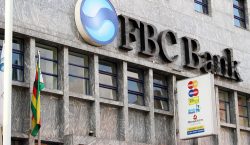

ZIMBABWE’S economy will grow at a much slower rate this year than the 3,8 percent predicted by authorities due to power outages, excess government spending, and money creation, economic analysts say.
The government is banking on mining, construction, agriculture, and tourism after forecasting a four percent growth rate in 2022, down from 4,6 percent, despite inflationary pressures and frequent power outages.
Last week, the World Bank maintained that Zimbabwe’s economy will grow by 3,6 percent this year.
Economist Prosper Chitambara was among the analysts who told The Financial Gazette this week that it would be difficult for Zimbabwe to attain set targets this year due to a number of reasons.

Gift Mugano
“The expectations for growth this year will be lower than they were last year. There are a lot of challenges and downside risks, for example the continued power outages will affect production and the economy as every sector is affected,” Chitambara said.
“We are not quite sure how the agriculture sector will perform. We are hoping it will be better than last year. We saw that there was an improvement in winter wheat and we are hoping that even in terms of maize this year there is going to be an improvement.
“But again, there are uncertainties. The elections can also be a downside risk to growth because normally in an election year, we tend to notice that public spending rises and that has a destabilising effect, especially if it is financed through inflationary sources through the creation of money.
“We are expecting sectors like mining to improve on the back of commodity prices firming as the global economy recovers from the recession. But overall, this year may be tough.
“Ensuring macroeconomic stability will be key in terms of ensuring that we achieve our set targets because, without stability, the economy cannot grow sustainably,” he added.
Economist Gift Mugano said the current macroeconomic environment is characterised by high inflation, making it difficult to attain the set growth targets.
“The 3,8 percent target is not attainable. One of the assumptions which were used by the minister of Finance — which is a sufficient requirement for the attainment of a 3,8 percent growth rate — was a stable microeconomic environment.
 “The threat to the growth target is macroeconomic instability characterised by the steep exchange rate and runaway inflation,” the Africa Economic Development Strategies executive director said.
“The threat to the growth target is macroeconomic instability characterised by the steep exchange rate and runaway inflation,” the Africa Economic Development Strategies executive director said.
“Annual inflation will be around 400 percent by mid-year and the exchange rate will be around ZWL$1 500:US$1. This will have the impact of eroding cashflows for companies and weakening their capacities to invest in production, resulting in a low growth rate for the country.
“We will see how the outlook looks like in terms of the rains, which are promising, but the challenge is the cost of production on the back of high inflation, high exchange rates and high-interest rates.”
He flagged elections as a threat to growth targets.
“It’s clearly laid out in the budget that there is massive amount of money going into elections. This will result in inflation and exchange rate spikes which will dampen any growth prospects. Government should do the opposite of what they are doing.
“You cannot provide excess liquidity in the market and expect to have macroeconomic stability.
“The ministry of Finance must manage its budget, already its challenging because we have a $4,5 trillion budget, which is a threat.
“The ministry must restrain from excessive election spending. Politically, we are advising government to run free and fair elections, which are free from violence and rigging because that has an impact on the economy.
“For Zimbabwe, we need to get our leaders elected in a way that is accepted by Zimbabweans and the global community for us to be able to have partners who can help us to take this economy forward,” Mugano said.
On his part, economist Tony Hawkins said despite the risks, his growth forecast is slightly more upbeat because of the good rains so far and strong gold and other precious metal prices.
“On the downside, almost all the risks are to the downside — the impact of the Ukraine war, a weaker US dollar (lower commodity prices, though not gold), higher energy prices, climate change impacts on demand for some exports, higher world interest rates, rigged elections, currency depreciation, triple-digit inflation, larger budget deficit,” Hawkins said.
“Most of the risks are exogenous except those relating to macroeconomic management — budget deficit, financing of agriculture by printing money, currency weakness and high inflation. All of these are policy issues that the government should but won’t tackle.
“A key issue is the unsustainable pattern of public spending — much of it hidden in quasi-fiscal operations which the Finance minister claims do not exist. The IMF says they do.”
Last month, the International Monetary Fund said real GDP growth for last year is anticipated to decline to 3,5 percent due to the ongoing power outages and ongoing inflationary pressures.
newsdesk@fingaz.co.zw